Table of Contents
Writing Resumes and Cover Letters Using ChatGPT: Ever stared at a blank resume document for an hour, only to end up with the same boring bullet points everyone else has? Yeah, you’re not alone. Most job seekers are still crafting resumes like it’s 1999, while hiring managers are drowning in a sea of identical applications.
What if you could leverage ChatGPT to create resumes and cover letters that actually get noticed? Not just noticed—remembered.
The truth is, writing resumes using ChatGPT isn’t about letting AI do all the work. It’s about asking the right questions that transform your experience into compelling stories that hiring managers can’t ignore. Writing Resumes and Cover Letters Using ChatGPT.
But here’s what most people get wrong when they try this approach…
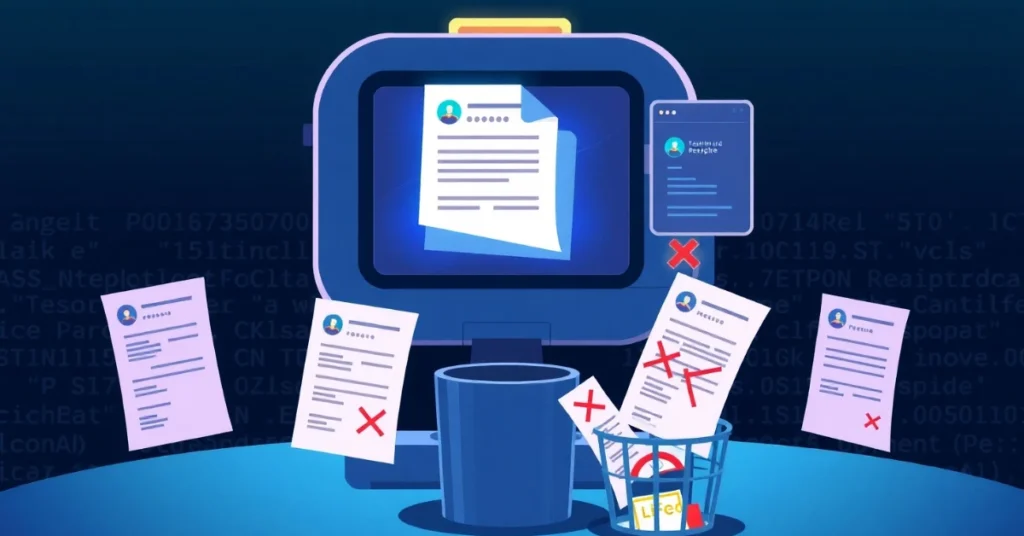
Understanding ChatGPT’s Resume-Building Capabilities
What makes ChatGPT effective for resume writing
ChatGPT isn’t just another text generator – it’s actually quite brilliant at helping you craft resumes that get noticed. The AI understands different industry expectations and can adapt your experience to match specific job descriptions. When you’re staring at a blank page wondering how to describe your last position, ChatGPT can suggest powerful action verbs and achievement-focused bullet points that showcase your impact.
One of ChatGPT’s biggest strengths is its ability to help you overcome writer’s block. You can simply tell it about your experience in casual language, and it will transform your words into professional resume content. The AI excels at finding fresh ways to describe common job responsibilities without falling into cliché territory. Writing Resumes and Cover Letters Using ChatGPT.
It’s also incredibly versatile – whether you need a complete resume overhaul or just want to polish a few sections, ChatGPT can scale its assistance to match your needs.
Key limitations to be aware of
ChatGPT isn’t perfect, and knowing its weak spots will save you headaches. The AI doesn’t know your career details unless you share them, so vague prompts lead to generic content. You absolutely need to fact-check everything it writes – the AI occasionally “hallucinates” details that sound plausible but aren’t true.
The tool also doesn’t have visual design capabilities, so while it can create the content for your resume, you’ll need to handle formatting elsewhere. And without specific guidance, ChatGPT tends to produce conventional resume language rather than the standout content that helps you compete in tough job markets. Writing Resumes and Cover Letters Using ChatGPT.
Remember that AI-generated content can sometimes feel impersonal. Your resume needs your authentic voice, so always review and personalize ChatGPT’s suggestions.
How to approach the AI with your resume needs
Getting the most from ChatGPT starts with being specific. Don’t just ask for “a good resume” – tell the AI your industry, experience level, target position, and key achievements. The more details you provide, the more tailored the results will be.
Try this proven approach:
- Start with a clear request: “Help me write bullet points for my marketing manager position focusing on campaign results and team leadership”
- Provide context about your career goals and the jobs you’re targeting
- Share examples of your work accomplishments with specific metrics
- Ask for variations and alternatives to pick what sounds most like you
- Writing Resumes and Cover Letters Using ChatGPT.
Think of ChatGPT as your brainstorming partner rather than your replacement. Ask it questions like “How can I make this bullet point stronger?” or “What’s another way to describe this achievement?”
Always review the AI’s suggestions critically. The best results come from a back-and-forth conversation where you refine ChatGPT’s output until it perfectly captures your professional story.
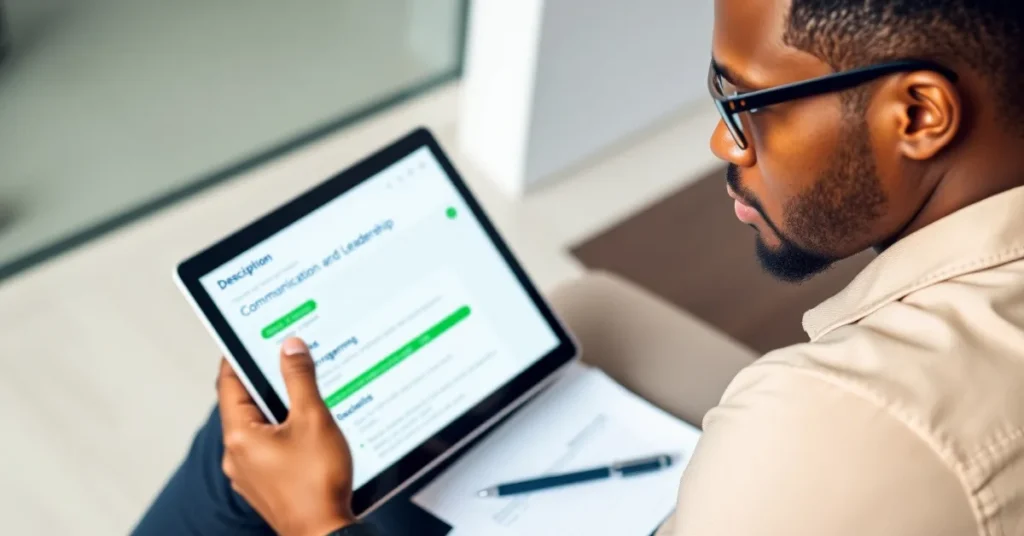
Crafting a Standout Resume with AI Assistance
A. Generating powerful achievement statements
Want to make your resume truly stand out? Achievement statements are your secret weapon. Unlike boring duty descriptions, achievements showcase your actual impact.
With ChatGPT, you can transform bland statements into compelling ones. Try this approach:
- Start with a basic job duty
- Ask ChatGPT: “Transform this into an achievement statement with metrics”
- Refine until it pops
- Writing Resumes and Cover Letters Using ChatGPT.
For example, instead of “Managed social media accounts,” you could write “Grew Instagram following by 78% in 6 months, resulting in a 23% increase in direct sales.”
Remember to include:
- Action verbs (Increased, Reduced, Generated)
- Specific numbers whenever possible
- The problem you solved or value you added
- Writing Resumes and Cover Letters Using ChatGPT.
Pro tip: ChatGPT can help brainstorm metrics you might have forgotten. Ask it “What metrics might be relevant for someone in [your role]?”
B. Tailoring your resume to specific job descriptions
Job applications aren’t a one-size-fits-all game. Your resume needs customization for each position.
Here’s how ChatGPT makes this easy:
- Paste the job description into ChatGPT
- Ask it to identify key skills, requirements, and buzzwords
- Request suggestions for tailoring your existing resume points
- Writing Resumes and Cover Letters Using ChatGPT.
This approach helps you mirror the company’s language without starting from scratch. ChatGPT can help you reorganize your experience to highlight the most relevant achievements for each position.
Ever wonder if you’re missing something important from the job description? Try asking ChatGPT to compare your resume against the listing and identify gaps. Writing Resumes and Cover Letters Using ChatGPT.
C. Optimizing for ATS (Applicant Tracking Systems)
Think your resume looks great? That’s nice, but if it can’t get past the ATS bots, no human will ever see it.
ATS systems scan resumes for keywords and formatting they can parse. ChatGPT can help you navigate these digital gatekeepers:
- Paste your resume and the job description
- Ask: “How can I optimize this resume for ATS systems while maintaining readability?”
Simple tweaks make huge differences:
- Proper section headings (Experience, Education, Skills)
- Standard formatting (avoid tables, graphics, headers/footers)
- Strategic keyword placement matching the job description
- Writing Resumes and Cover Letters Using ChatGPT.
Many qualified candidates get filtered out before a human review. Don’t be one of them.
D. Enhancing your skills section with relevant keywords
Your skills section isn’t just a laundry list – it’s prime real estate for keywords that make you discoverable.
ChatGPT excels at generating comprehensive, relevant skill lists. Try:
- Describe your role and experience
- Ask ChatGPT to suggest both hard and soft skills relevant to your target position
- Request organization by proficiency or category
- Writing Resumes and Cover Letters Using ChatGPT.
The magic happens when you combine industry-specific technical skills with transferable soft skills. For technical roles, ChatGPT can help you list the right programming languages, tools, and methodologies. For client-facing positions, it can suggest the perfect blend of communication and analytical skills.
Remember to be honest about your abilities – ChatGPT might suggest skills you don’t have. Only include those you can genuinely back up in an interview.

Writing Compelling Cover Letters Using ChatGPT
A. Structuring your cover letter for maximum impact
Gone are the days of generic, one-size-fits-all cover letters. With ChatGPT, you can craft a perfectly structured cover letter that makes hiring managers take notice. Start by asking ChatGPT to outline a cover letter with these key parts:
- A compelling header with your contact info
- The hiring manager’s name and company details
- An attention-grabbing opening paragraph
- A value-focused body section (1-2 paragraphs)
- A confident closing with a clear call to action
- Writing Resumes and Cover Letters Using ChatGPT.
Try this prompt: “Help me structure a cover letter for a [position] at [company] that highlights my skills in [relevant skills].”
ChatGPT really shines when you need to organize your thoughts. If you’re stuck on how to arrange your qualifications, ask it something like: “What’s the most effective way to organize my experience for a marketing position when transitioning from retail?”
B. Creating personalized opening paragraphs that grab attention
Your opening paragraph makes or breaks your cover letter. ChatGPT helps you craft one that actually gets read.
Skip the boring “I’m applying for…” openings. Instead, feed ChatGPT specifics about the company – recent news, values, or projects you admire. Writing Resumes and Cover Letters Using ChatGPT.
Try: “Write an opening paragraph for a cover letter that mentions [company]’s recent [achievement/project] and connects it to my experience in [relevant skill].”
The magic happens when you get specific. Maybe you discovered the company through their innovative product or share their mission. Tell ChatGPT about this connection, and it’ll help you transform it into an opening that shows genuine interest.
C. Developing a convincing body that highlights your qualifications
The body of your cover letter is where you back up your claims with evidence. ChatGPT helps you connect your experience directly to job requirements. Writing Resumes and Cover Letters Using ChatGPT.
First, paste the job description into ChatGPT and ask: “What are the top 3 skills needed for this position?” Then use this prompt: “Help me write a paragraph about my experience with [skill] using this example: [your specific example].”
Don’t just list achievements – explain their impact. If you increased sales by 20%, have ChatGPT help you describe what that meant for the company.
The most effective approach? Focus on problems you’ve solved. Try: “Help me describe how I solved [specific challenge] at my previous job and how that relates to the [target position].”
D. Crafting strong closing statements that inspire action
Your closing paragraph should leave recruiters eager to call you. ChatGPT can help you strike the perfect balance between confidence and humility.
Avoid generic endings like “I look forward to hearing from you.” Instead, try this prompt: “Write a confident closing paragraph that expresses enthusiasm for discussing how I can help [company] with [specific challenge or goal].” Writing Resumes and Cover Letters Using ChatGPT.
Make your final lines actionable. Ask ChatGPT to include a subtle call to action: “Create a closing statement that mentions my availability for an interview and references a specific aspect of the company culture I’m excited about.”
Remember to maintain your authentic voice. After ChatGPT generates text, read it aloud. Does it sound like you? If not, ask it to adjust the tone to match your speaking style.
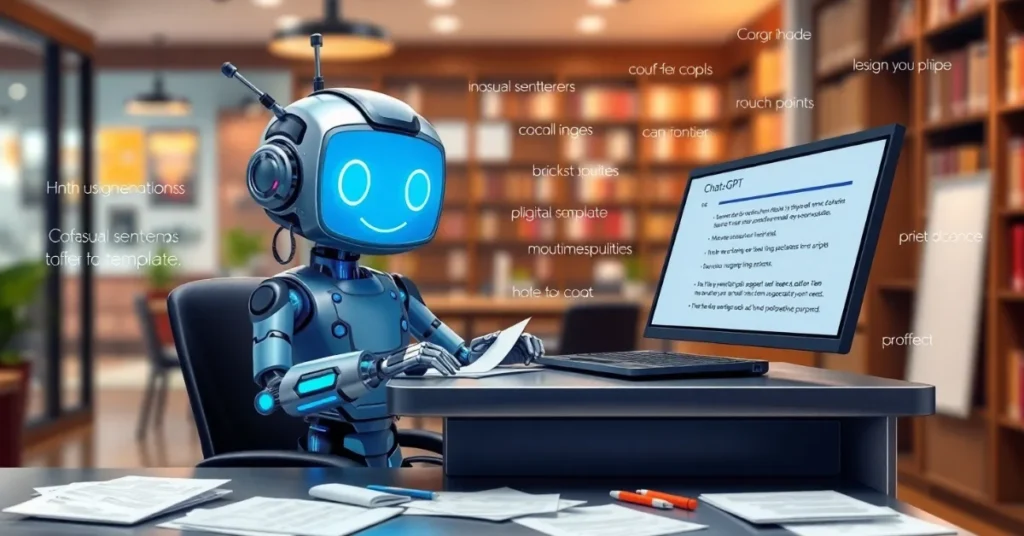
Prompt Engineering for Resume and Cover Letter Creation
Effective prompts for different resume sections
Tired of staring at a blank page when updating your resume? ChatGPT can help, but you need to know how to ask. For your professional summary, try: “Write a compelling professional summary for a [your position] with [X years] experience highlighting skills in [key strengths].”
For your work experience, get specific: “Transform this job description into 4-5 bullet points using strong action verbs and quantifiable achievements: [paste your current description].” Writing Resumes and Cover Letters Using ChatGPT.
Skills sections shine when you prompt: “Create a two-column skills section for a [your role] position, organizing technical and soft skills based on the following experience: [your background].”
For education sections, keep it simple: “Format my educational background for a resume: [your details].”
Templates to guide ChatGPT for better results
Your ChatGPT results are only as good as your prompts. Try this template for complete resume generation:
Create a professional resume for a [position] role with the following:
- Professional Summary: Highlight [3 key strengths] and [career goal]
- Experience: [Company names and dates]
- Skills: [List key skills]
- Education: [Degrees and institutions]
- Format it in a clean, ATS-friendly layout
For cover letters, this framework works wonders:
Write a cover letter for [position] at [company name] that:
1. Opens with my interest in the role because [specific reason]
2. Highlights my experience in [relevant skill/experience]
3. Connects my background to their needs mentioned in [specific job requirement]
4. Closes with enthusiasm and a call to action
Iterative techniques to refine AI-generated content
Getting perfect content rarely happens on the first try. After your initial draft, ask ChatGPT to “Make this more concise by removing unnecessary adjectives” or “Rewrite this to sound more confident.” Writing Resumes and Cover Letters Using ChatGPT.
Too generic? Try: “Revise this to include more industry-specific terminology for the [your industry] field.”
Compare versions by asking: “Create two alternative versions of this bullet point, one focusing on leadership and another on technical execution.”
The magic happens in the back-and-forth. If something doesn’t sound like you, simply say: “This sounds too formal. Rewrite it to match my voice, which is more [your preferred tone].”
Remember to fact-check everything ChatGPT produces—it’s your resume on the line!
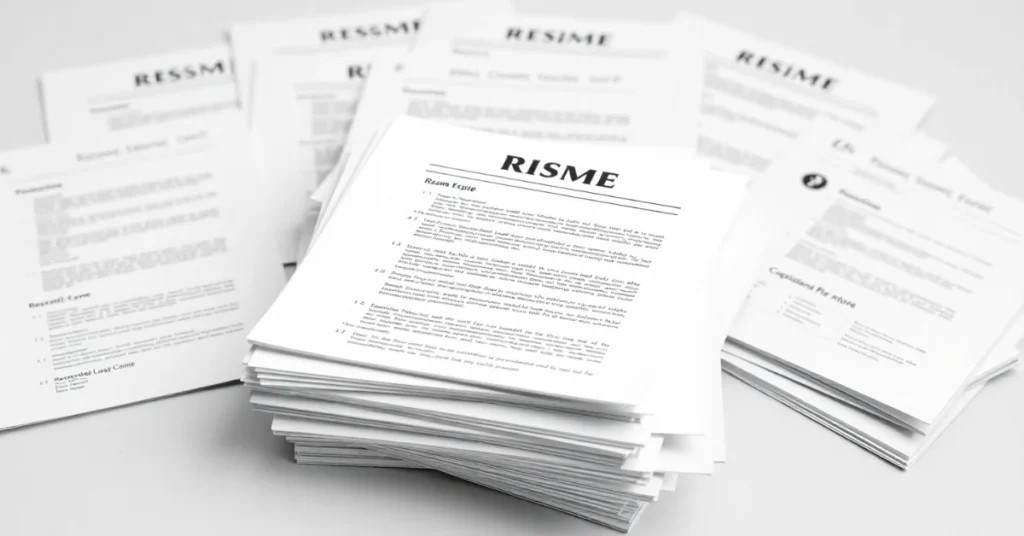
Editing and Polishing AI-Generated Content
Critical review strategies for AI-written materials
Got a shiny new resume from ChatGPT? Don’t hit send just yet. Taking time to critically review AI-generated content is non-negotiable. Start by reading everything out loud – you’ll catch awkward phrasing and robotic language that your eyes might miss on screen.
Check for these common ChatGPT quirks:
- Generic statements that could apply to anyone
- Repetitive phrases or sentence structures
- Overly formal language that nobody actually uses
- Missing specific achievements with real numbers
- Cookie-cutter examples that lack industry relevance
- Writing Resumes and Cover Letters Using ChatGPT.
Create a simple checklist for each section of your resume or cover letter. Ask yourself: “Does this actually sound like me?” and “Would I say this in an interview?” If the answer is no, it needs reworking.
Adding your authentic voice to maintain personality
AI-written content often lacks that special something that makes you… well, you. After getting your ChatGPT draft, inject your personality by:
- Adding industry-specific lingo you actually use daily
- Incorporating your genuine communication style (are you straight-to-the-point or more descriptive?)
- Including personal touches that reflect your values and career motivations
- Writing Resumes and Cover Letters Using ChatGPT.
Try this exercise: Record yourself talking about your proudest work achievements, then transcribe key phrases. Weave these authentic expressions into your AI-generated text.
Remember those quirky accomplishments that make great interview stories? They belong in your resume too! Maybe you’re the person who automated a tedious process everyone hated, or perhaps you’re known for bringing calm to chaotic projects. These details make recruiters remember you.
Common pitfalls to avoid in AI-assisted job application documents
The biggest mistake job seekers make with AI tools? Trusting them too much. ChatGPT can hallucinate experiences you never had or create job titles that don’t exist in your field. Always fact-check every detail.
Other traps to sidestep:
- Leaving in ChatGPT’s favorite corporate buzzwords (synergy, anyone?)
- Accepting vague descriptions instead of concrete examples
- Keeping the same tone throughout both resume and cover letter
- Failing to customize content for specific job descriptions
- Letting AI write your personal statement or career summary
- Writing Resumes and Cover Letters Using ChatGPT.
Most dangerous is what recruiters call “AI sameness” – when multiple candidates submit nearly identical applications because they all used the same prompts. Your materials should pass the “uniqueness test” – if you removed your name, would the hiring manager still recognize it as yours?
Tools to complement ChatGPT for professional results
ChatGPT is powerful, but it’s just one tool in your arsenal. Level up your application materials with these complementary resources:
Grammarly helps catch subtle language issues that ChatGPT might miss, while Hemingway Editor identifies complex sentences that could turn off busy recruiters.
For resume design, try:
| Tool | Best For | Limitation |
|---|---|---|
| Canva | Creative visual resumes | Limited ATS compatibility |
| JobScan | ATS optimization | Basic design options |
| ResumeWorded | Real-time feedback | Requires subscription |
Use LinkedIn to research authentic language from professionals in your target role. Find someone with your dream job and note how they describe their responsibilities and achievements.
Don’t forget industry-specific tools – legal professionals might use legal writing assistants, while developers could use GitHub Copilot to better articulate technical skills.
The best results come from combining AI efficiency with human creativity and judgment. Your final document should feel like it was crafted by a human – because ultimately, it was.

Conclusion: Writing Resumes and Cover Letters Using ChatGPT
ChatGPT has revolutionized the job application process by providing powerful tools for creating standout resumes and compelling cover letters. Through effective prompt engineering, you can harness AI to highlight your skills and experiences while maintaining your authentic voice. The key is to view ChatGPT as a collaborative partner in your job search journey—one that helps generate content but relies on your human touch for personalization and refinement. Writing Resumes and Cover Letters Using ChatGPT.
As you move forward with your job applications, remember that AI-generated content serves as an excellent starting point, but the editing and polishing process is where your application truly comes to life. Take the time to review, customize, and enhance ChatGPT’s suggestions to ensure they accurately reflect your unique professional story. With the right balance of AI assistance and personal input, you’ll create application materials that capture attention and showcase your potential to prospective employers.
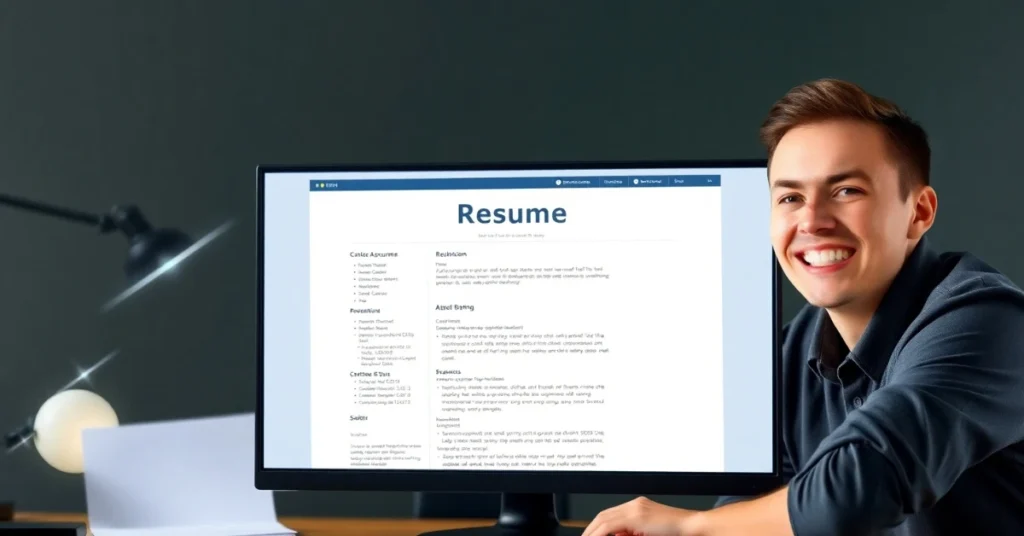
Frequently Asked Questions (FAQs) About Writing Resumes and Cover Letters Using ChatGPT
How can ChatGPT help me write a resume?
ChatGPT helps by turning your raw career details into polished bullet points, professional summaries, and skills sections. It suggests action verbs, quantifiable results, and tailored phrasing that align with industry expectations. Writing Resumes and Cover Letters Using ChatGPT.
Can ChatGPT create a complete resume for me?
Yes, but only if you provide detailed input. ChatGPT can generate a full draft, but you’ll need to fact-check, customize, and design the final version for ATS compatibility and personal voice. Writing Resumes and Cover Letters Using ChatGPT.
Is it safe to rely entirely on ChatGPT for resumes and cover letters?
No. While ChatGPT is a powerful assistant, you must review and personalize its output. AI may include generic content or even “hallucinate” details you never provided. Writing Resumes and Cover Letters Using ChatGPT.
How do I give ChatGPT the right prompts for resumes?
Be specific. Instead of “Write my resume,” say: “Create bullet points for a marketing manager role highlighting campaign growth, budget management, and leadership with measurable results.” Writing Resumes and Cover Letters Using ChatGPT.
Can ChatGPT tailor my resume for each job description?
Yes. Paste the job description into ChatGPT and ask it to identify key skills and match your experience. This helps align your resume with employer requirements and ATS keywords. Writing Resumes and Cover Letters Using ChatGPT.
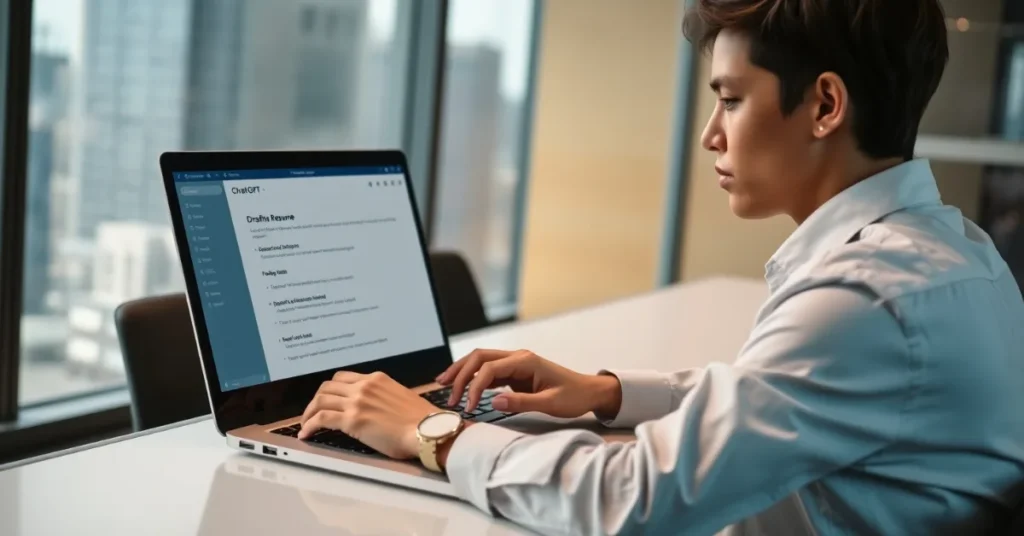
Will resumes written with ChatGPT pass ATS systems?
They can, if formatted correctly. Avoid tables, graphics, or unusual layouts. Ask ChatGPT: “Optimize my resume for ATS while keeping it human-readable.” Always double-check the formatting in Word or PDF. Writing Resumes and Cover Letters Using ChatGPT.
Can ChatGPT help with writing cover letters?
Absolutely. ChatGPT can structure your cover letter, create personalized openings, connect your achievements to company needs, and draft confident closing statements with clear calls to action. Writing Resumes and Cover Letters Using ChatGPT.
How do I make sure my ChatGPT-generated resume doesn’t sound generic?
Add your authentic voice. Replace overused buzzwords, inject industry-specific terms, include unique achievements, and refine tone until it matches your personality. Writing Resumes and Cover Letters Using ChatGPT.
What mistakes should I avoid when using ChatGPT for resumes?
Copying AI text without edits
Leaving in vague or generic phrases
Forgetting to customize per job description
Allowing “AI sameness” where resumes all sound alike
Writing Resumes and Cover Letters Using ChatGPT.
What tools should I use alongside ChatGPT for better results?
Grammarly: grammar and tone check
Hemingway Editor: readability improvement
JobScan/ResumeWorded: ATS optimization
Canva: visual resume design (use cautiously for ATS)
Combining ChatGPT with these ensures professional, polished results.
Writing Resumes and Cover Letters Using ChatGPT.
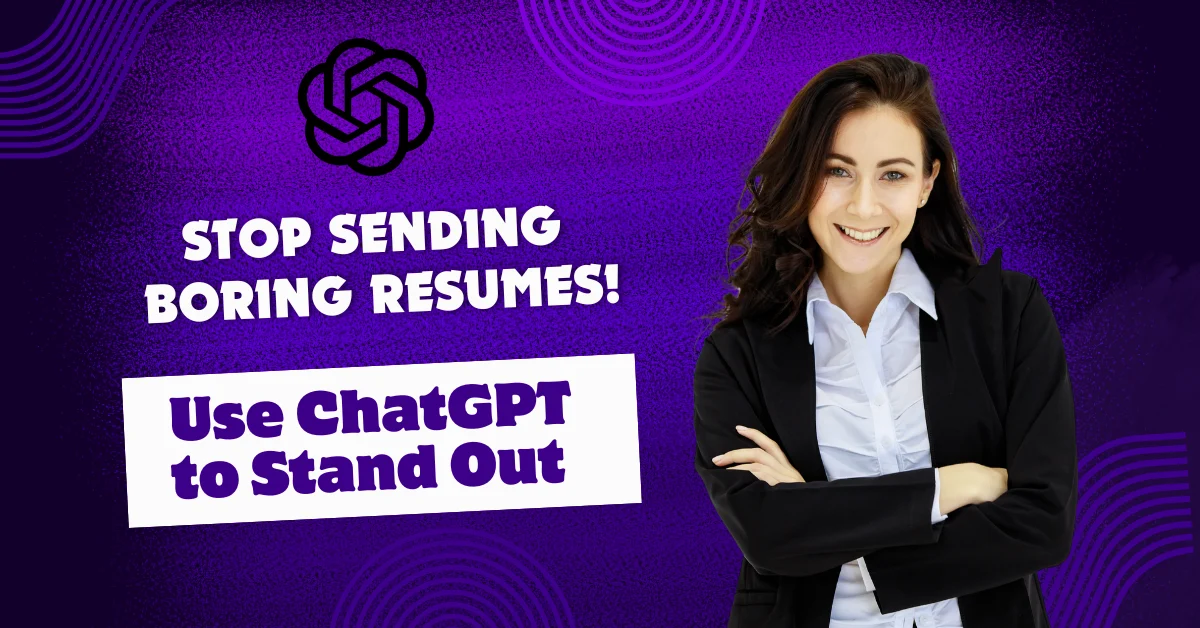
1 thought on “Powerful Writing Resumes and Cover Letters Using ChatGPT 2025”